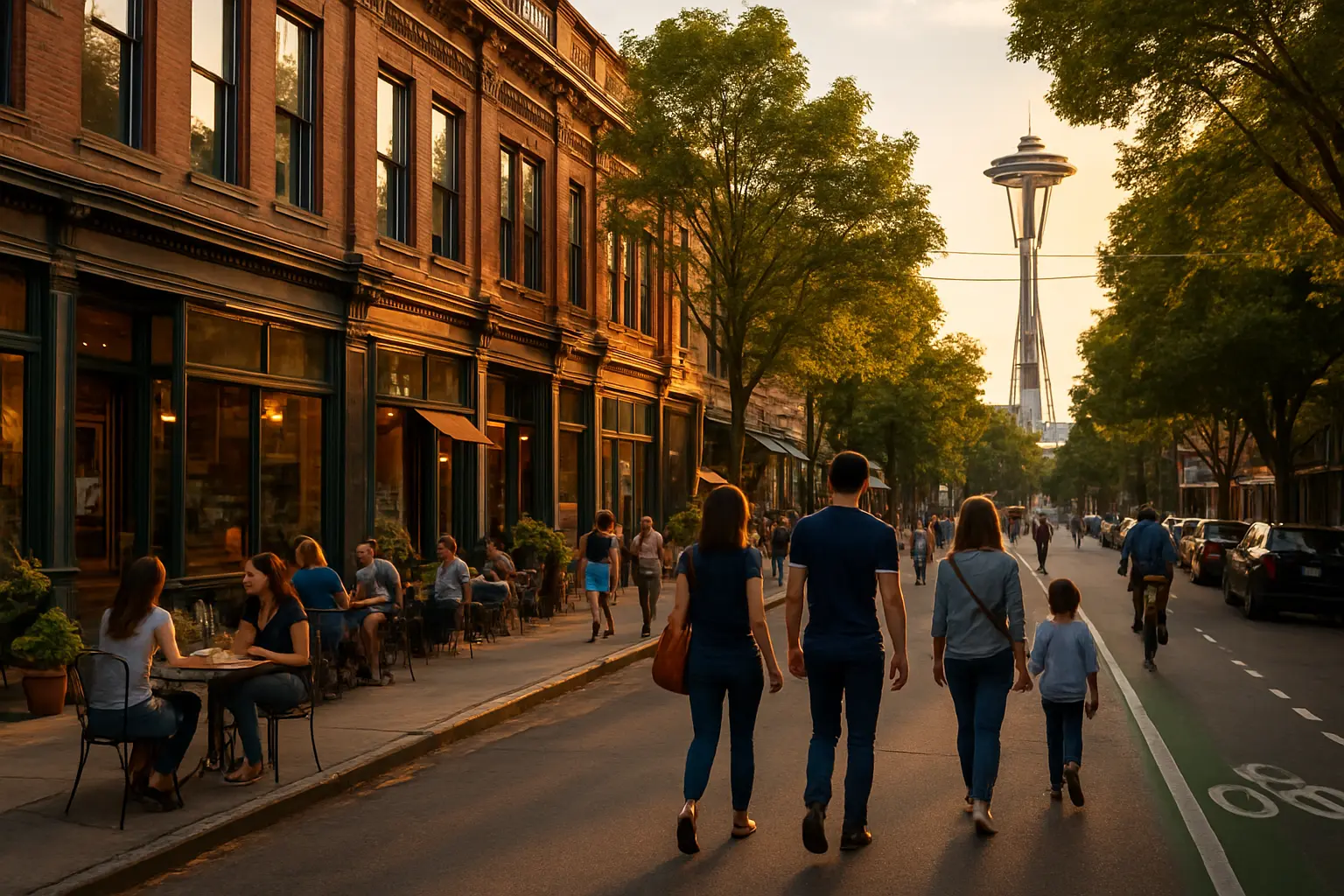Seattle's Hidden Gems: Why Walkable Neighborhoods Are Worth the Premium
Discover how proximity to amenities and vibrant community life is reshaping Seattle's residential real estate landscape.

The Rise of Walkability: How Seattle's pedestrian-friendly neighborhoods are becoming the most sought-after locations for homebuyers
In Seattle's evolving real estate landscape, walkable neighborhoods have emerged as the crown jewels of urban living. These pedestrian-friendly districts command premium prices, and for good reason. Residents enjoy immediate access to restaurants, shops, parks, and cultural venues, all while reducing their carbon footprint and improving their quality of life.
Recent real estate trends show that properties in walkable neighborhoods consistently outperform their car-dependent counterparts in both value retention and appreciation. The demand for walkable communities has grown significantly, with many homebuyers prioritizing walkability scores in their property search criteria.
Key Features of Seattle's Most Walkable Districts: From Capitol Hill to Ballard
Seattle's most walkable neighborhoods share common characteristics that make them particularly attractive to residents:
- Capitol Hill: Known for its vibrant arts scene, diverse dining options, and historic architecture
- Ballard: Famous for its Sunday farmers market, craft breweries, and maritime heritage
- South Lake Union: Hub of tech innovation with modern amenities and waterfront access
- Queen Anne: Offering stunning city views, boutique shopping, and tree-lined streets
These neighborhoods feature well-maintained sidewalks, efficient public transit connections, and a rich mix of local businesses that create a vibrant street life. The key to their success lies in thoughtful urban planning that prioritizes human-scale development.
Investment Potential: Understanding the long-term value appreciation of homes in walkable neighborhoods
Investing in Seattle's walkable neighborhoods has proven to be a smart financial decision. Properties in these areas typically experience:
- Higher resale values compared to car-dependent neighborhoods
- Stronger rental demand and income potential
- Better resilience during market downturns
- Increased property appreciation rates
"Walkable neighborhoods aren't just about convenience – they're about building sustainable, vibrant communities that stand the test of time."
Making the Smart Move: Tips for buyers looking to invest in Seattle's pedestrian-friendly communities
Research and Planning
Before investing in a walkable neighborhood, consider these essential factors:
- Check Walk Score® ratings and transit accessibility
- Research upcoming development projects in the area
- Evaluate the mix of amenities within walking distance
- Consider the neighborhood's historical price trends
Investment Strategies
To maximize your investment potential:
- Look for properties near planned infrastructure improvements
- Consider smaller properties with smart layouts
- Focus on neighborhoods showing signs of growing commercial activity
- Evaluate properties with potential for value-adding improvements
As Seattle continues to grow, walkable neighborhoods represent not just a lifestyle choice but a smart investment in the future of urban living. These communities offer the perfect blend of convenience, sustainability, and financial opportunity for those looking to make their mark in Seattle's real estate market.


